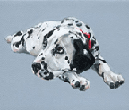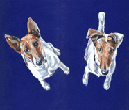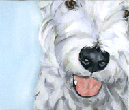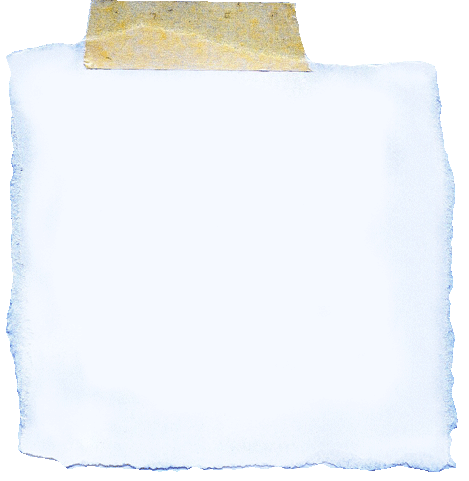
notes on the weimaraner
The Weimaraner is a sleek, moderately large, athletic dog with beautiful lines
and a short, fine, smooth gray coat. All shades of gray are accepted. The
head and ears are a bit lighter in color than the rest of the body. The head
is long and aristocratic and the muzzle is strong. The eyes are amber, blue-gray
or gray - with an intelligent expression, and the nose is gray. The ears are
moderately long and pendant. The topline slopes gently downward from the withers.
The forelegs should be straight with dewclaws removed. The tail is docked
to 1½ inches (4cm) when the dog is two days old. The limbs are long and muscular.
The Weimaraner has webbed feet for swimming.
Happy, loving cheerful, affectionate and very rambunctious. Intelligent, but
can be highly opinionated and willful, therefore this breed should have firm,
experienced training from the start. Quick to learn, but resistant to repetitive
training. Reserved with strangers and sometimes combative with other dogs.
Socialize them well at an early age. Protective on his own territory. Very
brave and loyal, it has a strong prey instinct. Do not trust with small non-canine
animals. This is definitely not a herding or farm dog. The Weimaraner needs
to live indoors as a member of the family. He needs attention and companionship.
If relegated to a kennel life or if left alone too much, he can become very
destructive and restless. He is a natural protector.
The
breed is several centuries old. A Weimaraner appeared in a Van Dyck painting
of the early 1600's. There are various theories as to its origin. Some feel
it is the result of albinism that overtook some ancient German pointing dogs.
Others feel it is descended from the German hound, the Braken. And still others
feel it is the fruit of crossings overseen by Grand Duke Karl August of Weimar
between a regular pointer and a certain yellow pointer. The Weimaraner is
a pointer and an all-around personal hunting dog. He was originally used to
hunt, track and bring down big game. As big game became scarce, he was adapted
to smaller game and upland birds. He also has a reputation as a fine water
retriever, though he may need to be taught to swim. Weimaraners have been
used as rescue dogs, service dogs for the disabled, and as police dogs in
England and Germany.
|
"Blue"
- portrait of a weimaraner |
for more
weimaraners and other dog breeds -
visit the dog painting gallery
 |
 |
 |
 |
home | about
| gallery
| your
dog | sizes
& prices |
FAQ | dog
shop
blog | links
| testimonials
| contact us
site
designed by paintmydog © justine osborne 2002 - 2013
all
dog portraits, pictures, photos and text not to be reproduced without permission
from the artist
 |